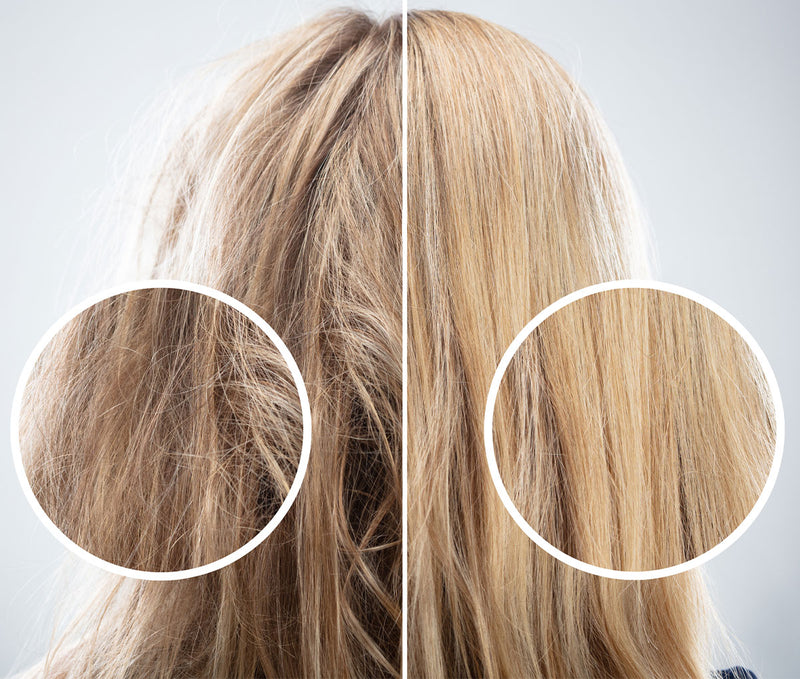///
For most people, hair loss is an inevitable life experience that can lead to emotional distress, a loss of self-confidence, and even depression. It is no wonder why these changes can carry such an impact, as our hair can play a significant role in defining who we are. Full, thick hair can convey youth, vitality, and a sense of general health. Since August is National Hair Loss Awareness Month, there is no better time to take a moment to learn more about hair loss, uncover some of the causes, and learn about a few ways to mitigate, halt, or even reverse the process.
It is a commonly held belief in Western culture that hair loss is only a problem for men. This belief may be because more products are readily available to address men's hair loss, and the topic for men is openly discussed. Additionally, men can choose to be bald to control the situation without fearing the same social stigmas that a bald woman may experience. However, women experience some form of hair loss with signs of thinning and loss beginning around 30 years old. In fact, in the U.S., over 30 million women will experience some form of hair loss compared to 50 million men. Furthermore, one in 8 women between the age of 30-40 will experience some visible hair loss, and by 49, 25% of women will have some visible loss.* Although it may be generally acceptable to openly discuss men's hair loss, it is not universally experienced free of emotional pain or suffering by everyone. This is true regardless of gender.
In both men and women, the causes still need to be fully understood. Still, studies have uncovered several factors that lead to hair thinning and loss, including genetics, hormonal changes or imbalances, improper nutrition or mineral deficiencies, chronically-elevated stress, environmental factors, and photoaging**.
What treatments are available?
Several products have been developed to promote hair growth and a reduction in hair loss in various ways with a range of ingredients and through different mechanisms. Treatments can range from natural and inexpensive to invasive medical procedures that are costly. The level of treatment needed depends on the severity of hair loss, the underlying condition causing the loss, age, and gender, and financial willingness to address hair loss. Below is a breakdown of more common methods, but keep in mind that this is not an exhaustive list of every treatment out there, as there are seemingly countless products, procedures, and practices available.
The Holistic Approach
The easiest and most cost-effective way to combat mild loss is by addressing the underlying causes of stress that can be directly controlled. Those identified potential causes, like improper diet, vitamin and mineral deficiency, stress, and environmental factors, can be addressed in several ways without turning to medications or procedures.
In today's world, with more focus on life balance along with access to resources providing tools and support, there are countless methods to reduce stress in daily life, from meditation to exercise, mindfulness, and lifestyle changes. Changes to diet and nutrition can have a significant impact, as the products we put into our bodies certainly impacts not only how we feel but how we move, recover and grow. Obtaining a screening through a nutritionist or doctor can uncover imbalances of critical vitamins and minerals needed to keep the body in an optimal state. If the underlying cause is environmental, it may be seasonal, or it may be related to the climate in general. Changes to address this could be much larger and require more commitment, but understanding the potential impact of the environment on hair - and general overall health, for that matter, can help to introduce positive changes that benefit more than just hair growth.
Over-the-Counter Treatments
For those seeking more help with ingredients beyond what can be derived from diet alone, over-the-counter treatments can offer potential growth with minimal potential impact on the body. Of the most commonly known hair loss treatments, the most well-known is minoxidil, an over-the-counter vasodilator medication known for its ability to potentially slow or stop hair loss and promote hair regrowth in one out of 2 users. This has been a popular product on the market, but it does come with some potential side effects, including burning or irritation, redness in the treated area, and chest pain in some users. This treatment has been around for years and is found in dozens of hair loss products as the main ingredient. Although it is widely used and heavily researched, it is not for everyone.
Prescription Drugs
If over-the-counter treatments are not providing enough of a result, intervention with controlled chemicals is the next level of intervention. Drugs developed and tested to directly intervene with the mechanisms that may cause hair loss must be prescribed by a medical professional because of the potentcy and potential complications related to use. The drug Finasteride is one such drug that works by inhibiting the enzyme that converts testosterone into dihydrotestosterone (DHT), which can eliminate those adverse effects and retain and even reverse the loss. Studies have linked the naturally occurring hormone dihydrotestosterone (DHT), which is found within the dermal layers of both men and women is believed to the reduction in follicle performance and size, leading to thinning and loss. So, by blocking the enzyme completely, hair loss can be mitigated, and growth can take place. However, medications like this do require a prescription and may present side effects, as well. Additionally, considering Finasteride need to know that treatment may cause congenital disabilities, so pre-menopausal women should use a reliable birth control method when taking Finasteride.
Surgical Transplants
If the scope of hair loss is extreme or causes high emotional distress and expense is not a factor, hair transplants may be the solution. The hair transplant procedure provides immediate results and may be the only method for truly regaining a full head of hair for some people. Hair transplantation takes healthy, DHT-resistant follicles from the side and back of the head and surgically implants them on the crown, top, and front of the head. The technology of hair transplants has dramatically improved over the past 30 years with improvements in natural look and feel faster recovery time, and a reduction in cost. Overall, hair transplants are a sure way to regain a full head of hair, but it is a surgical procedure, and there is a cost that can be prohibitive to many. Additionally, a surgical procedure may be an extreme measure for light and average hair loss and thinning and not for those who experience hair loss due to stress, diet, and environmental impacts, as thinning and loss from these factors generally correct themselves over time if the cause is mitigated or eliminated.
Where Actsyl Fits into the Range of Treatments
Research into solutions for premature hair loss has been underway for years, with some treatments gaining traction in clinical studies with producing measurable results. Two ingredients that have been proven to outperform other treatments on the market are Redensyl and Capixyl, and the results from clinical studies on the effectiveness of treating hair thinning and loss and encouraging growth are remarkable. Derived from natural sources and patented molecules, both Redensyl and Capixyl can be used safely and provide better results than minoxidil for most users without the side effects commonly experienced.**
The treatments within the Actsyl range have been formulated to offer non-invasive, non-prescription solutions that may work for those experiencing mild to medium hair loss without requiring changes to hairstyle or impacting daily grooming routines.
From the beginning, the team at Actsyl has focused on creating effective and helpful products for anyone experiencing hair thinning and loss while also keeping the specific needs of women in mind. Hair loss can affect anyone - men or women - and when it happens, it can be life-changing and detrimental to self-confidence.
However, developing an understanding of the underlying causes and identifying treatment options can help to build the right growth regimen and set expectations for success. For those that choose to combat hair loss with Actsyl, we hope our products deliver results and help to restore a sense of confidence and control.
///
As with the introduction of any product, drug or change to diet or regimen, it is always best to consult your physician prior to beginning treatment. Research everything, use common sense and seek more than one opinion or source.
*Starace, M., Orlando, G., Alessandrini, A. et al. Female Androgenic Alopecia: An update on Diagnosis and Management. Am J Clin Dermatol 21, 69-84 (2020)
**Lucas Meyer, Independent Study - Capixyl., What is Hair Loss? (2018)






